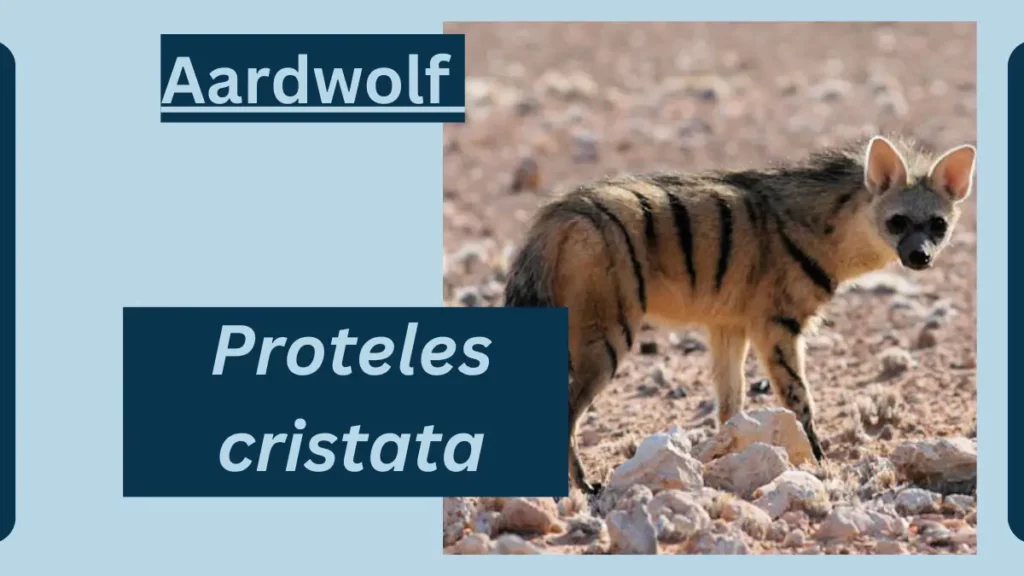Aardwolf Animal facts | Proteles cristata
October 13, 2023
The aardwolf (Proteles cristatus) is a small, insectivorous mammal native to sub-Saharan Africa. It is the only living member of the genus Proteles. The aardwolf is similar in appearance to a hyena, but it is not closely related. It has a long, sticky tongue that it uses to slurp up termites, its main food source.
The aardwolf is a shy animal that is rarely seen, but it plays an important role in the ecosystem by helping to control termite populations.

Aardwolf
Here are some facts about Aardwolf:
| Topic | Information |
| Scientific Classification | – Kingdom: Animalia |
| – Phylum: Chordata | |
| – Class: Mammalia | |
| – Order: Carnivora | |
| – Family: Hyaenidae | |
| – Genus: Proteles | |
| – Species: Protelescristata | |
| Origins and Evolution | The Aardwolf is a small carnivore that is native to eastern and southern Africa. It is a member of the hyena family but has a distinct diet and behavior. |
| Characteristics | Mammal’s Anatomy and Appearance: Aardwolves have a slender body with a yellowish-brown coat and vertical black stripes on their fur. They have long ears and a bushy tail. |
| Size: They are relatively small, typically weighing between 15 to 30 pounds (7 to 14 kilograms) and measuring about 20 to 28 inches (50 to 70 centimeters) in length. | |
| Distribution and Habitat | Aardwolves are found in grasslands and open woodlands of eastern and southern Africa, including countries like South Africa, Namibia, and Kenya. |
| Behavior and Lifestyle | These creatures are primarily nocturnal, emerging at night to forage for food. They are solitary and usually hide in burrows or termite mounds during the day. |
| Reproduction and Life Cycles | Aardwolves reproduce sexually, and females give birth to litters of typically 2 to 5 pups. The gestation period is around 90 to 95 days. Pups are weaned at about 3 months. |
| Diet and Prey | Aardwolves are insectivorous, primarily feeding on termites and other insects. They have specially adapted tongues to extract termites from their mounds. |
| Predators and Threats | Natural predators of Aardwolves include larger carnivores like lions and hyenas. They are also threatened by habitat loss and changes in termite populations. |
| Interesting Facts and Features | Specialized Diet: Aardwolves are highly specialized insectivores, with 90% of their diet consisting of termites. |
| Territorial Behavior: They mark their territory with scent markings and may use burrows or termite mounds for shelter. | |
| Relationship with Humans | Aardwolves have limited interaction with humans due to their nocturnal and secretive nature. They are not typically kept as pets and are rarely seen in the wild. |
| Conservation Status and Life Today | Aardwolves are not considered in terms of conservation status as they are not threatened. However, they are vulnerable to habitat changes and should be protected. |
Also Read:
File Under:







Leave a Reply